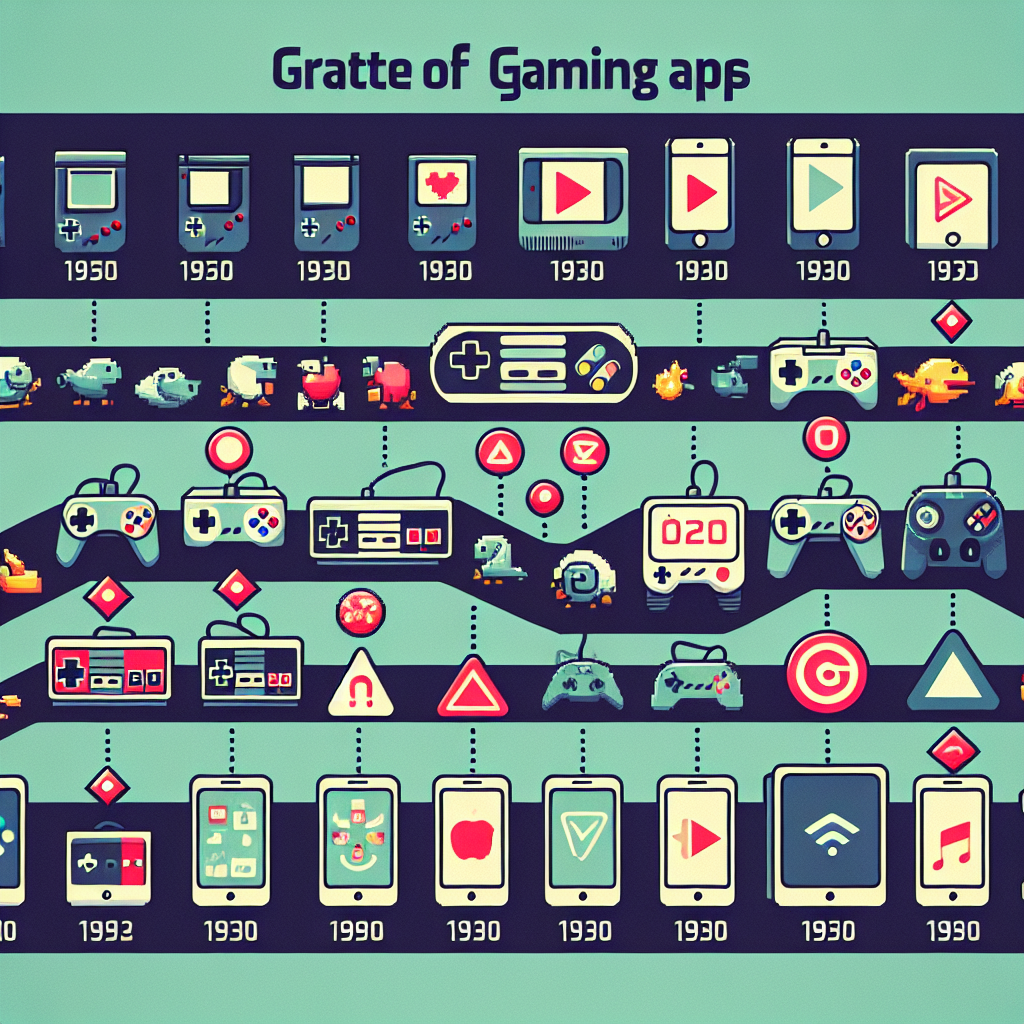When the digital revolution hit the late 20th century, games transitioned from tangible boards and chips to virtual platforms. This ushered in a new era of gaming, with personal computers and gaming consoles becoming the de facto play zones. However, the real breakthrough came in the form of gaming apps with the advent of smartphones, lighting up the digital gaming industry in unprecedented ways. This piece takes you on a comprehensive journey through the evolution of gaming apps, looking at their development and profound influence on gamers worldwide.
The Dawn of Mobile Gaming
The mobile gaming era began in the early 2000s with the release of simple yet addictive games like ‘Snake’ on Nokia phones. However, these games were technically limited, restrained to monochrome graphics, and mechanically simple due to hardware limitations.
The game ‘Tetris’, pre-installed on Hagenuk MT-2000 devices in 1994, is often considered the first real mobile game. But Nokia’s ‘Snake’, released in 1997 on the Nokia 6110, managed to popularize the idea surrounding mobile games. This, coupled with infrastructural developments like the advent of Java and GPRS, gave momentum to mobile gaming, albeit primitive in its form.
Emergence of the App Stores
The real impetus to gaming apps’ evolution came in 2008 with the launch of Apple’s App Store, which served as a marketplace for iPhone users to download both free and paid apps, including a wide array of games. Google soon followed suit with the Android Market (now Google Play), creating a new ecosystem for mobile gaming.
This accessibility and ease of distribution of games enabled developers across the globe to showcase their talents, leading to an explosion of available gaming apps. The App Stores revolutionized the industry, enabling sophisticated games, such as ‘Words with Friends’ and ‘Angry Birds’, to reach millions of users.
Rise of Freemium Games
In the years following, the industry noticed a significant shift towards ‘freemium’ gaming apps, a novel concept at that time. These games, including ‘Candy Crush Saga’ and ‘Pokémon GO’, were free to download, but players were incentivized to make in-app purchases for a richer gaming experience. The freemium model has since proven prosperous, driving considerable revenue for developers and app platforms alike.
Social Connectedness and Multiplayer Games
Next came the trend of multiplayer games that took social interaction to a new level. Games like ‘Clash of Clans’ and ‘Player Unknown’s Battlegrounds’ (PUBG) capitalized on the desire to connect with others and compete in real-time, engaging millions of players worldwide.
The integration of social media platforms with gaming apps further deepened this connection, allowing players to share achievements, invite friends, and compare scores. This confluence of gaming and social interaction amplified user engagement, making games vastly more enthralling and intense.
Innovation in Hardware and Software Capabilities
Advancements in smartphone technology also played a significant role in propelling the evolution of gaming apps. As devices became more potent, with larger screens and improved graphics, games became more visually impressive and intricate. Augmented Reality (AR) and Virtual Reality (VR) tech also permeated the gaming landscape, with games like ‘Pokémon GO’ and ‘The Walking Dead: Our World’ leveraging AR to provide immersive experiences.
Simultaneously, software improvements like better AI and cloud-based gaming apps contributed to the rapid growth and diversification of the mobile gaming market.
The Current State and Future Trends
Today, gaming apps encompass a vast array of genres and styles, catering to a widening demographic of gamers – from casual to hardcore. One of the latest trends is the rise of ‘hyper-casual’ games, which are light, easy-to-play, and have simple mechanics, such as ‘Helix Jump’ and ‘Hole.io’.
Looking ahead, mobile eSports is set to explode, driven by the success of games like ‘Fortnite’ and ‘PUBG Mobile’. Mobile gaming is moving to cross-play, where players across consoles, PCs, and mobiles can play together, promoting platform neutrality. The future could also see the advent of 5G bolstering cloud-based gaming apps, providing seamless, low-latency gaming experiences no matter the device’s local processing power.
The journey of gaming apps has been nothing short of revolutionary, shaping and redefining entertainment by continually pushing the boundaries of technology and creativity. It has not just revolutionized the gaming industry as a whole but transformed the idea of entertainment, social interaction, and connectivity in the digital age. Over the years, gaming apps have grown both in scope and importance. They have moved beyond a mere time-pass activity, becoming a powerful socio-cultural phenomenon. As we look towards the future, one thing is certain: the evolution of gaming apps is far from over.
Share this content:

